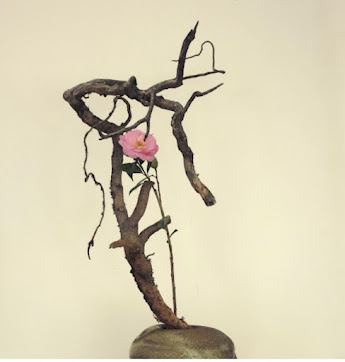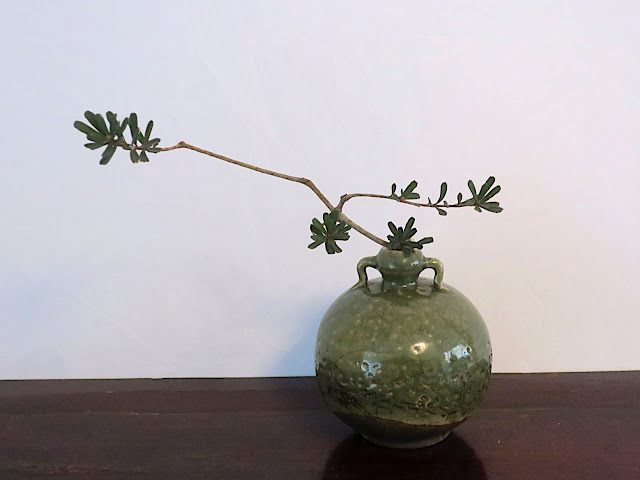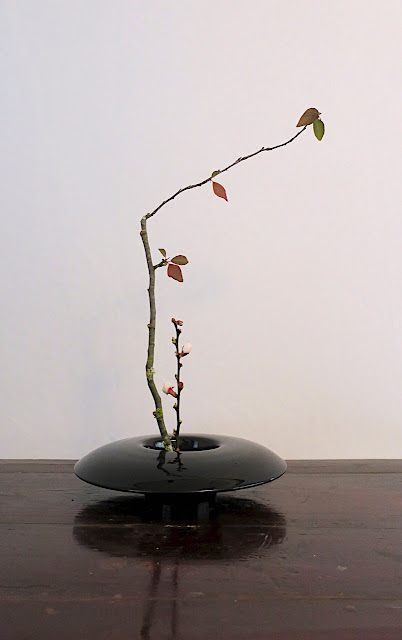In a recent class, I had set my Melbourne students the Sogetsu curriculum exercise of making a "Simplified Ikebana". In this exercise students are encouraged to study the materials carefully and then remove all elements that are extraneous to their design. The main challenge is to not remove so much that the original material becomes unrecognisable. Below are before and after photographs of the exercise I took in 2015, when I had the presence of mind to take them.
The branch material was the main stem of a dead Ivy, Hedera, that had been climbing a tree. To make the comparison easier the photo on the left has been rotated, because it was taken with the branch lying on its side on a table.The photos from the classroom are only of the finished ikebana.
Eugenia used a small branch of Calistemon without any flowers and most of the leaves removed. The unusual vase really suited the angular lines in the branches, which have been flattened in the photograph unfortunately.
In a second example she again showed the angular lines in a branch of mostly defoliated Banksia, which was set in a green bottle-shaped vessel.
Marcia used a stem of prunus and a single Camellia bud. All the side branches and most of the leaves were removed.
In a second example, the main stem was reduced to a single angular line beside which stood a single line of ... blossom
Jacqueline had brought a stem of Cymbidium orchids. Only a single flower was used. The dried branch that was chosen to be included had to be inverted to fit into the narrow opening of the vase.
Although all the materials I had used in the first ikebana fitted that description, I thought I should be using something different for the next exercise. I particularly wanted to use the Dutch Iris Iris x hollandica that I had grown in a pot, as well as some of the red Japanese flowering quince Chaenomeles.
When I came to place the iris in this simple (not simplified) ikebana the flowers were far too large. The solution was to use the leaves only, which added a feeling of freshness. This style of arranging the materials all arising from a single line was my "nod in the direction" of Ikenobo traditional practice.
The domed ceramic vessel is by the Victorian ceramic artist Owen Rye.
17th September 2023












No comments:
Post a Comment